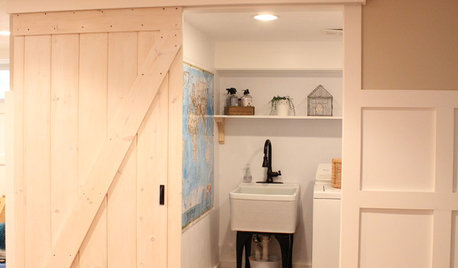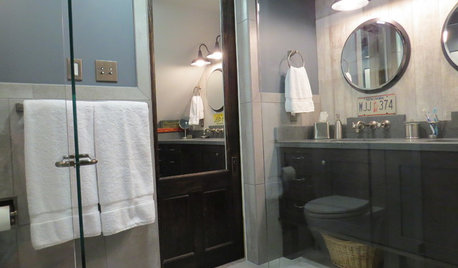A duct problem or bathroom fan problem?
jj_upstateny
12 years ago
Related Stories

REMODELING GUIDESThe Hidden Problems in Old Houses
Before snatching up an old home, get to know what you’re in for by understanding the potential horrors that lurk below the surface
Full Story
HOUSEKEEPING10 Problems Your House May Be Trying to Show You
Ignore some of these signs and you may end up with major issues. We tell you which are normal and which are cause for concern
Full Story
KITCHEN DESIGNHow to Choose the Right Hood Fan for Your Kitchen
Keep your kitchen clean and your home's air fresh by understanding all the options for ventilating via a hood fan
Full Story
HOUZZ TOURSHouzz Tour: Major Renovations Aid a Usonian Home
Its classic lines got to stay, but this 1950s home's outdated spaces, lack of privacy and structural problems got the boot
Full Story
DIY PROJECTSMake Your Own Barn-Style Door — in Any Size You Need
Low ceilings or odd-size doorways are no problem when you fashion a barn door from exterior siding and a closet track
Full Story
KITCHEN APPLIANCESLove to Cook? You Need a Fan. Find the Right Kind for You
Don't send budget dollars up in smoke when you need new kitchen ventilation. Here are 9 top types to consider
Full Story
KITCHEN OF THE WEEKKitchen of the Week: Fans of Traditional Style Go For a ‘Mad Men’ Look
The TV show inspires a couple to turn their back on the style they knew and embrace a more fun and funkier vibe in their kitchen
Full Story
DECORATING GUIDES21st-Century Looks for Shabby Chic Fans
How to update a style that's been popular since the 1990s? With new colors, crisper lines and contemporary settings
Full Story
BATHROOM DESIGNKey Measurements to Make the Most of Your Bathroom
Fit everything comfortably in a small or medium-size bath by knowing standard dimensions for fixtures and clearances
Full Story
BATHROOM DESIGNSee the Clever Tricks That Opened Up This Master Bathroom
A recessed toilet paper holder and cabinets, diagonal large-format tiles, frameless glass and more helped maximize every inch of the space
Full Story







mike_home
heatseeker
Related Professionals
Albany Solar Energy Systems · Bridgeport Solar Energy Systems · Danville Solar Energy Systems · Greenville Solar Energy Systems · Muscatine Solar Energy Systems · Norwich Solar Energy Systems · Asheville Home Automation & Home Media · Brockton Home Automation & Home Media · Broomfield Home Automation & Home Media · Orlando Home Automation & Home Media · Severn Home Automation & Home Media · Shawnee Fireplaces · Evans Fireplaces · Germantown Fireplaces · Quincy Fireplacesbrickeyee
energy_rater_la
jj_upstatenyOriginal Author
Edbishop868
RobbZee
brickeyee
Elmer J Fudd
alan_s_thefirst
RobbZee
alan_s_thefirst
brickeyee
alan_s_thefirst
brickeyee